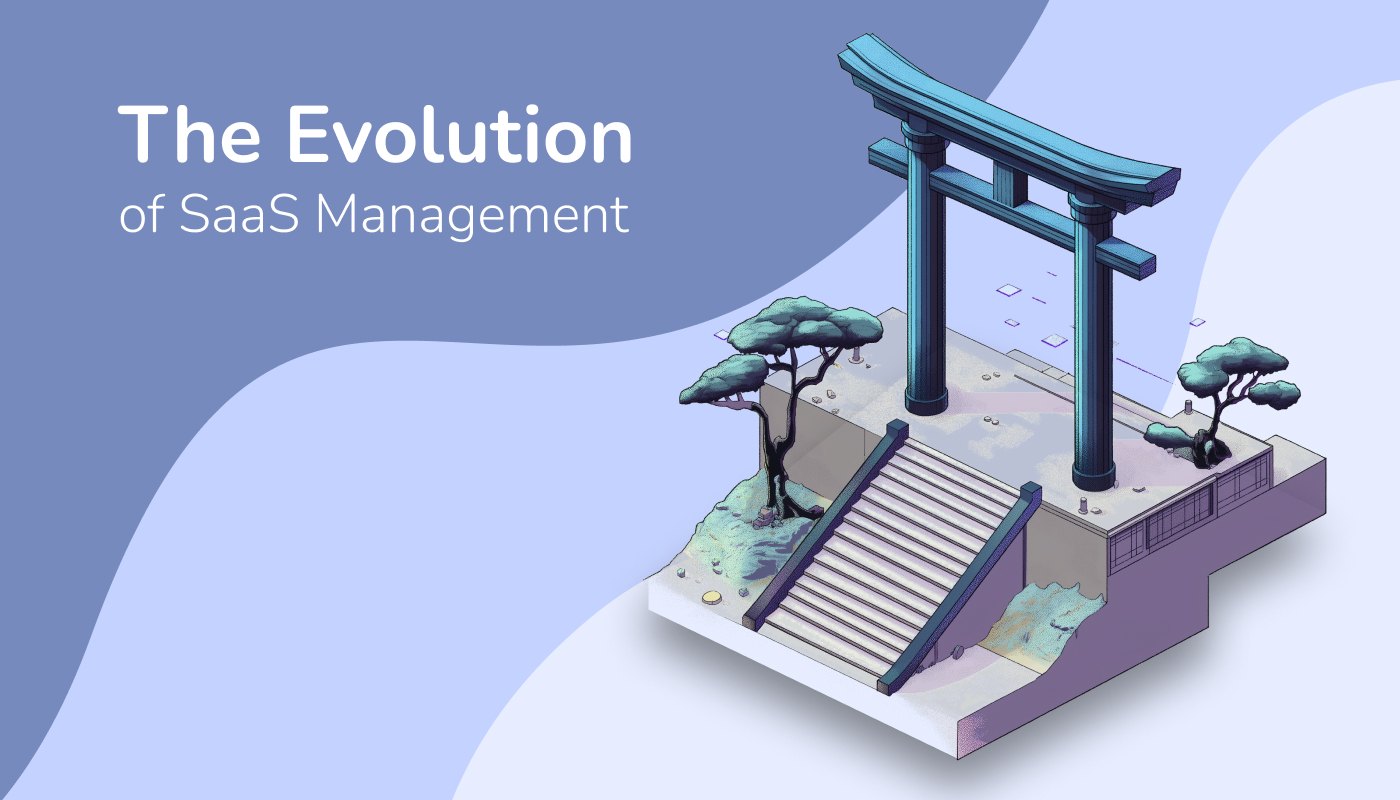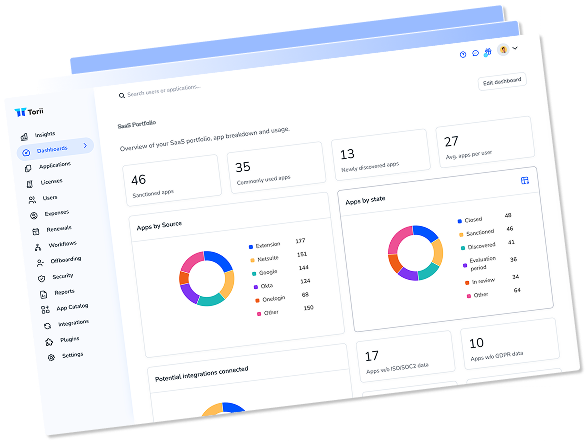Torii CEO and Co-Founder Uri Haramati reflects on the company’s journey from a niche startup to becoming recognized as a Leader in the 2024 Gartner Magic Quadrant™ for SaaS Management Platforms. Get a complimentary copy of the report today.
Torii was born from a problem. Software was shifting to the cloud, and companies were not ready for the transition. The growth of SaaS meant that employees were adding new apps at record speed without the approval of procurement. These unsanctioned apps (shadow IT) were adding tasks to already overworked IT teams. Onboarding, offboarding, spend management, and more, these legacy processes broke down under the weight of SaaS “busywork.” That’s why Torii was born. To address the problem at the heart of everything—unmanaged applications.
I experienced the headaches firsthand. My background in leadership and entrepreneurship meant that I was always testing new apps and dealing with the consequences, especially with a lean team. The systemic issues were painful, and manual management was impossible. That was when I realized that the only way out of the mess was through a unifying technology, one software designed to allow IT to see, manage, and automate all the software in their ecosystem. That was when I resolved to build Torii.
Why “SaaS Management” mattered
In 2016, my co-founders, Tal and Uri, and I spent weeks discussing the symptoms of managing SaaS.
- Wasted money
- Security risks
- Broken operations
- Bad employee experience
The issue was that different teams within an organization had different priorities, and we had to decide if we would focus on a subset of issues or stick to our original vision of “one software to manage all software.” We weren’t the only team working on this either. Many vendors, some which are still around, were also trying to tackle the problem of SaaS Management by addressing specific symptoms.
A Slack exchange between me and my co-founders about how to pitch the idea of Torii to investors. This was when we started to identify SaaS Management as the “north star” of the solution.
After hundreds of conversations with IT leaders, founders, and technologists—we doubled down on SaaS Management. That decision felt risky at the time. We were focusing on unmanaged apps, a problem that many organizations weren’t aware of instead of the more obvious symptoms of spend and security.
I thought about it like this. If I were a doctor and someone came into my office complaining of a series of symptoms that all sprung up at the same time—what would be my duty? I could prescribe a host of medicines to address each individual symptom or I could do the hard work of finding the underlying source of the symptoms. In our mind, this was the only way to proceed. But, this meant that we had to build our platform on a foundation of accurate data and robust automation and in order for that to work, we needed to focus on organizations with a large number of cloud apps.
From nice to have to necessity
In 2020, everything turned upside down. The pandemic struck, putting us on lockdown, and challenging companies to rethink what the workplace was. As knowledge workers stayed home, companies started adding more and more SaaS apps to their ecosystem and overnight, cloud apps went from “nice to have” to a necessity. As SaaS became the new default form of software, the management of those apps became necessary as well. Companies pushed legacy processes around budgets, procurement, and security to the side as they focused on survival at any cost. Even today, we are still dealing with the consequences of that era, organizations are still rationalizing their apps, license seats, and contracts.
As these changes rippled through the modern workplace, I&O leaders began to look for insight and guidance about the implementation of a SaaS Management Platform.
SaaS Management today
In July of 2024, Gartner® published its Magic Quadrant™️ for SaaS Management Platforms which recognized Torii as a Leader. The report encourages I&O leaders to manage SaaS apps to mitigate common problems. From the report:
“SaaS management platforms empower organizations to address the compounding challenges of SaaS application usage across the business that lead to overspend, elevated risk, lack of visibility and contract sprawl. This inaugural Magic Quadrant helps I&O leaders identify suitable vendors.”
The average organization has about 600 apps in their organization, most of which are shadow IT, and according to Gartner, companies are spending more than ever, “per-employee SaaS spend currently averages $1,370, a 55% increase since 2021 (12% CAGR).” Without a way to centrally manage SaaS, problems will get worse, not better. According to the Report:
- “Through 2027, organizations that fail to centrally manage SaaS life cycles will remain five times more susceptible to a cyber incident or data loss due to incomplete visibility into SaaS usage and configuration.”
- “Through 2027, organizations that fail to attain centralized visibility and coordinate SaaS life cycles will overspend on SaaS by at least 25% due to unused entitlements and unnecessary, overlapping tools.”
- “Through 2027, over 50% of organizations will centralize SaaS application management using an SMP, an increase from less than 10% in 2024.”
Next Steps: Adopt an SMP that is right for you
The journey of building a SaaS Management Platform like Torii has been both challenging and rewarding. It started as a solution to a hidden problem. But today, Torii is a crucial component of modern IT infrastructure. We believe the recognition of Torii as a Leader in the Gartner Magic Quadrant for SaaS Management Platforms validates our decision eight years ago to address the root cause of issues like overspend, security risks, and lack of visibility—unmanaged SaaS applications.
But for you, the most crucial step is the next one.
SaaS Management is no longer optional. The best time to manage your cloud apps was years ago, but the second best time is now. If you’re ready to take the next step and learn about the SMPs available, you can get a complimentary copy of the Gartner Magic Quadrant. It’s full of excellent analysis and unbiased evaluation of vendors in the space.
Gartner, Magic Quadrant for SaaS Management Platforms, Tom Cipolla, Yolanda Harris, Jaswant Kalay, Dan Wilson, Ron Blair, Lina Al Dana, 22 July 2024
GARTNER is a registered trademark and service mark of Gartner, Inc. and/or its affiliates in the U.S. and internationally, and MAGIC QUADRANT is a registered trademark of Gartner, Inc. and/or its affiliates and are used herein with permission. All rights reserved.
Gartner does not endorse any vendor, product or service depicted in its research publications, and does not advise technology users to select only those vendors with the highest ratings or other designation. Gartner research publications consist of the opinions of Gartner’s research organization and should not be construed as statements of fact. Gartner disclaims all warranties, expressed or implied, with respect to this research, including any warranties of merchantability or fitness for a particular purpose.

